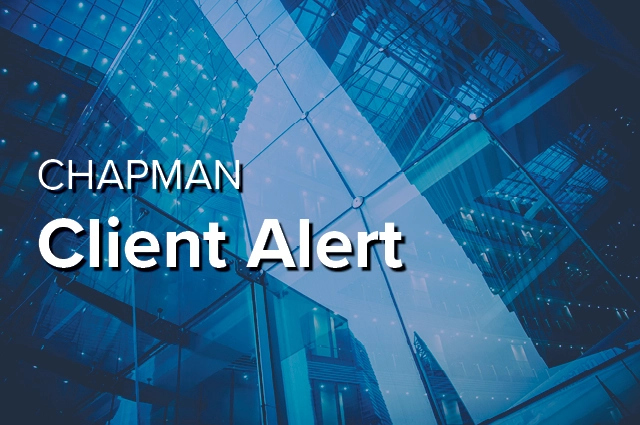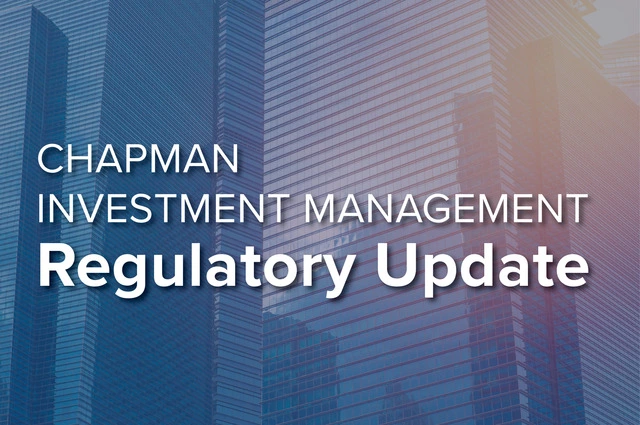- Topic: The Fed
35 matches.
In 2017, the UK authority that oversees the London interbank offered rate, announced that LIBOR may be phased out after the end of 2021. The announcement applied to all currency and term variants of LIBOR, including US dollar denominated LIBOR.
The Federal Reserve has established the Main Street Loan Program to provide support to small and medium-sized businesses that were in sound financial condition before the onset of the COVID-19 pandemic.
On June 11, the Federal Reserve Bank of New York issued an updated Notice of Interest for the Municipal Liquidity Facility to reflect the expansion of eligibility for the facility.
On June 3, the Federal Reserve announced expanded eligibility for its Municipal Liquidity Facility. Under the new terms, a State that does not have at least two total counties or cities that meet the minimum population requirements will be able to identify a city or county to be an Eligible Issuer.
The Federal Reserve today issued an amended term sheet establishing pricing criteria for its Municipal Liquidity Facility last described in our April 29 Client Alert. The Federal Reserve Bank of New York also issued today a revised FAQs for the facility.
- May 7, 2020 (Updating an April 14, 2020 Client Alert)
This alert explores the three loan facilities constituting the Main Street Lending Program: the newly announced Main Street Priority Loan Facility, the revised Main Street New Loan Facility, and the revised Main Street Expanded Loan Facility.
On May 5, federal banking regulators adopted an interim final rule that neutralizes the liquidity coverage ratio impact for banks participating in the Federal Reserve’s Money Market Mutual Fund Liquidity Facility and the Paycheck Protection Program Liquidity Facility.
On April 27, the Federal Reserve issued a press release announcing changes to the Municipal Lending Facility described in previous client alerts. At the same time, the Federal Reserve Bank of New York, as sole Reserve Bank lender for the facility, issued a FAQs for the facility.
- April 22, 2020 (Updating an April 13, 2020 Client Alert)
On April 9, the Federal Reserve issued term sheets for six “new” funding facilities under the CARES Act. This client alert describes in detail the Municipal Liquidity Facility.
On April 9 the Federal Reserve issued term sheets for six “new” funding facilities under the CARES Act. Three of those facilities provide for direct loans to companies.
On April 9, 2020, the Federal Reserve released a revised term sheet for TALF 2020 that, among other things, broadens the range of assets that qualify as eligible collateral under the program.
Earlier today the Federal Reserve announced it would establish six new funding facilities supported by Treasury funding authorized by Section 4003(b)(4) of the CARES Act.
The Federal Reserve has established a webpage that provides links to a FAQ and other documents for the Money Market Fund Liquidity Facility described in earlier Chapman client alerts.
Yesterday the Federal Reserve announced it was temporarily removing Treasury securities and deposits at Federal Reserve Banks from the supplementary leverage ratio applicable to Category I-III bank holding companies or US intermediate holding companies of foreign banks.
On March 23, the Federal Reserve announced the establishment of the Term Asset-Backed Securities Loan Facility to support the flow of credit to consumers and businesses.
On March 23, the Federal Reserve issued further amendments to add negotiable certificates of deposit and all short-term municipal securities to the list of eligible collateral.
On March 23, the Federal Reserve added municipal issuers and amended the pricing for the commercial paper funding facility announced on March 17 and issued other “program terms and conditions” posted on the website of the Federal Reserve Bank of New York.
This morning, the Board of Governors of the Federal Reserve System announced sweeping actions to help the economy.
On March 18, the Federal Reserve announced a Money Market Fund Liquidity Facility to make loans to banks and certain affiliates secured by certain assets acquired from “prime” money market funds. Earlier today, the Federal Reserve issued amendments to the program.
On March 17, the Federal Reserve Board announced the establishment of two emergency funding facilities that closely mirror facilities established in 2008 during the last financial crisis in providing liquidity to both short and long term funding markets.
- The Banking Law Journal
This article outlines the features of proposals to adjust the applicability of certain capital and liquidity tests and certain enhanced prudential standards for bank holding companies.
On August 22, the three federal banking agencies issued an interim final rule implementing the May 2018 banking law’s requirement that investment grade, liquid and readily marketable municipal obligations be treated as Level 2B “high quality liquid assets” under the liquidity coverage ratio rule.
On May 22, the House passed Senate bill S. 2155, which would amend certain Dodd-Frank provisions and, primarily for smaller banks and credit unions, provide additional regulatory relief. President Trump is expected to sign the bill, so that it will take effect as law.
The US Court of Appeals for the District of Columbia Circuit recently issued a decision in a case that involved a question of whether the risk retention requirements imposed by Section 941 of the Dodd-Frank Act required open market CLO managers to retain risk in those transactions they managed.
On April 19, the House Financial Services Committee posted a “discussion draft” of a revised version of the CHOICE Act. The discussion draft contains most of the provisions in last year’s bill with a number of important changes.
- February/March 2017Pratt's Journal of Bankruptcy Law
With Republicans retaining control of both chambers of Congress and Donald Trump elected President, the prospects for financial regulatory reform have changed. Many observers point to the Financial CHOICE Act as the best indication of Republican Congressional aspirations for such reform.
- Spring/Summer 2016 (Originally Published April 7, 2016)Real Estate Finance Journal
The Board of Governors of the Federal Reserve adopted a final rule to include certain U.S. municipal securities as high-quality liquid assets for purposes of the liquidity coverage ratio rule to which large banks are subject.
- June 2016AIRA Journal
This article discussed leveraged lending guidelines, unitranche facilities and the risks associated with unitranche facilities, including with respect to “agreements among lenders” as illustrated by the recent case of In re Radio Shack Corporation.
The Board of Governors of the Federal Reserve System issued a Notice of Proposed Rulemaking re-proposing a rule that would establish credit limits for single counterparties ofU.S. bank holding companies, foreign banking organizations, and U.S. intermediate holding companies of an FBO.
- Client Alert
On March 4, 2016 the Board of Governors of the Federal Reserve System issued a Notice of Proposed Rulemaking re-proposing a rule that would establish credit limits for single counterparties ofU.S. bank holding companies, foreign banking organizations, and U.S. intermediate holding companies of an FBO, with $50 billion or more of consolidated assets.
- Client Alert
To kick off the Memorial Day weekend, the Federal Reserve Board announced a proposal to include certain state and municipal general obligation bonds in the calculation of High Quality Liquid Assets, the numerator of the new Liquidity Coverage Ratio requirement to which large banks are subject.
In September 2014, the U.S. banking agencies adopted final rules implementing a liquidity coverage ratio requirement that will test a bank's ability to withstand "liquidity stress periods." In collaboration with the Structured Finance Industry Group (SFIG), Chapman attorneys authored a guide summarizing elements of the final rule that have the greatest impact on the securitization market.
On September 3, 2014, the US banking agencies adopted final rules implementing a liquidity coverage ratio (LCR) requirement that will test a bank's ability to withstand liquidity stress periods. The specific objective of the LCR rules is to ensure that a bank has enough high quality liquid assets (referred to as HQLA) that can be immediately converted into cash to meet its liquidity needs for a 30-day stress period.
- Client Alert
On October 24, 2013, the Board of Governors of the Federal Reserve Board released a proposed rule that introduces a liquidity coverage ratio requirement that will test a bank's ability to withstand "liquidity stress periods."









